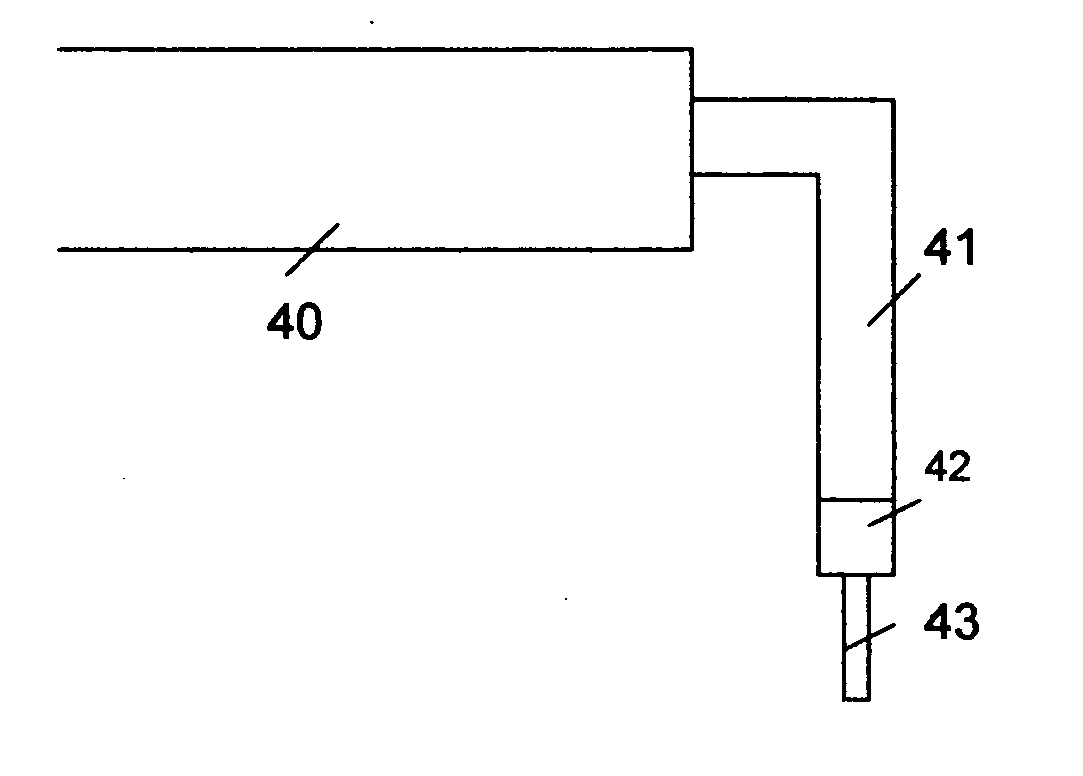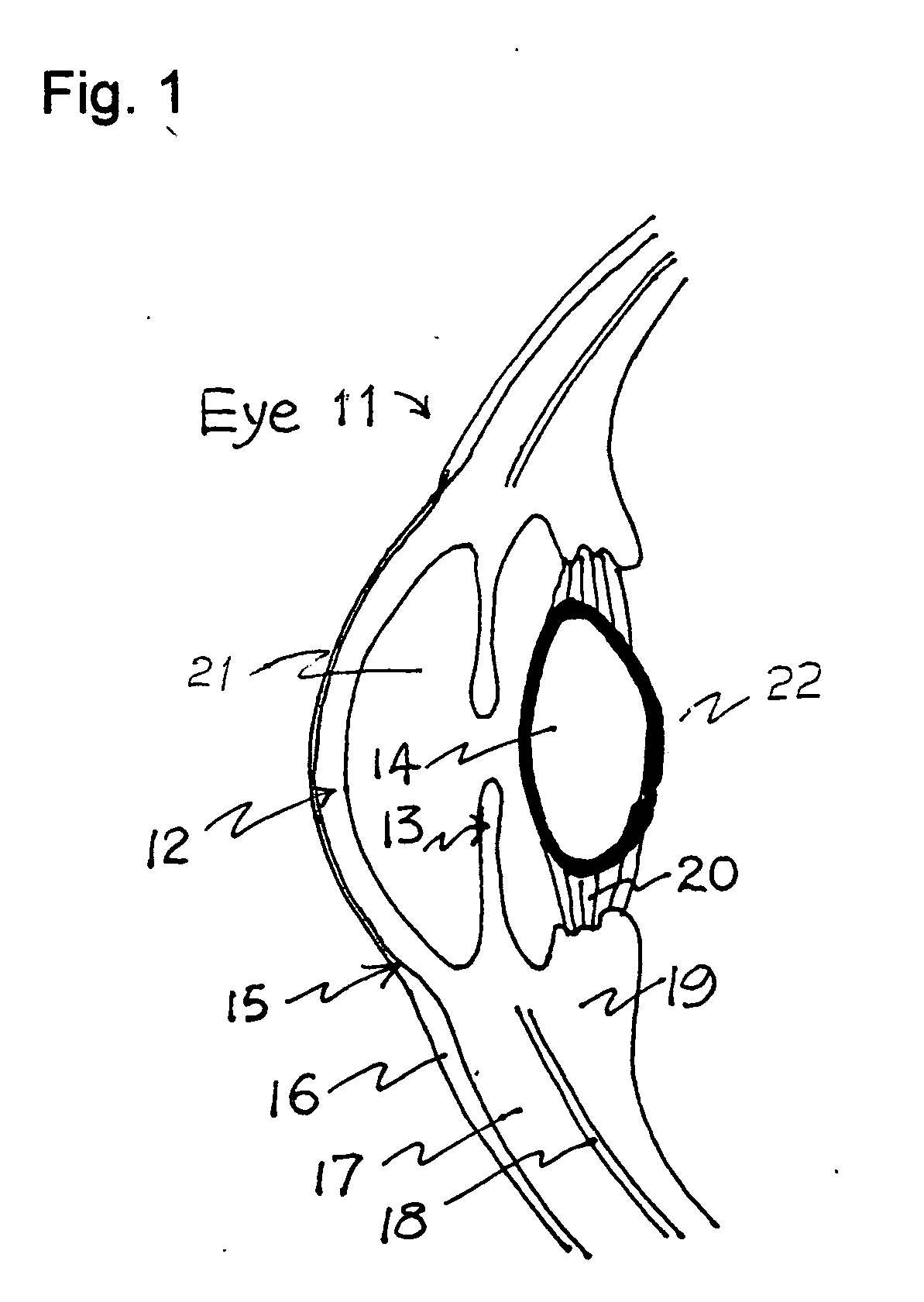These methods, however, were limited to low-diopter hyperopic corrections.
Strictly speaking, these prior arts cannot be used to correct the true “presbyopia” and only performed the mono-vision for hyperopic patients.
The above prior arts, therefore, did not actually resolve the intrinsic problems of presbyopic patient caused by age where the lens loses its
accommodation as a result of loss of elasticity in ciliary-body or scleral layer due to age.
The non-
contact mode used in the prior art of HLTK suffers major regression due to its limited
penetration depth of the laser energy (less than about 0.2 mm).
Contact mode used in conventional DTK and penetrating needle used in CK may improve the stability, however, they still suffer poor
predictability postoperative major regression and initial
efficacy of these prior arts limited their application only for low hyperopia correction over the non-dominant eye.
Furthermore, prior arts using one-zone method suffered major postoperative regression due to shallow penetration and poor
predictability of refractive outcome due to the non-controlled spot size and absorption coefficient (A).
Without specifying these spectra, within a
narrow range of less than 0.01 micron, the uncertainty of A will result in unknown penetration depth which is critical in the outcome.
The mechanical SEB approach has the drawbacks of complexity, major invasive,
time consuming, costly, potential side effects and with major postoperative regression.
However, there were no parameters specified for the source of heat or
radiation.
No laser device was made and no clinical studies have been conducted to show the effectiveness of the concepts proposed by Schachar over 10 years ago.
Without specifying these elements, Schachar's concept will fail in any practical
system or procedure.
Furthermore, the lack of information on clinical issues, such as locations, patterns and depth of the treated tissue also prevents any clinically useful
system to be made based on Schachar's prior arts.
This method, however, has never been clinically tested due to the risk of cataract and technical difficulties in laser spot size
position control.
This prior art was also limited to laser specifications of
pulse duration less than 10 picoseconds, energy per pulse less than 30 micro
joule.
From our clinical results using the method proposed in our prior arts, we found that there are two major drawbacks: first, regression is improved (less than that of incision method and SEB), but still significantly reduce the
efficacy for postoperation after 9 to 12 months; secondly, the initial
accommodation amplitude (AA)
ranging from 0.5 to 2.5 diopter (with a mean about 1.9 diopter) is too low when postoperative regression of (20% -40%) is included.
This prior art, however, suffers both clinical and technological difficulties.
It is very difficult to control the gonio lens angle for a laser to target at zonules while keeping the lens and iris intact.
In addition, the selected heating of zonules is limited by the transparency of
cornea and humous cavity at the selected laser spectra.
The
thermal energy procedures for corneal shrinkage, HLTK, conventional DTK and CK, all are limited to the treatment of low hyperopia, and limited to the treatment of non dominant single eye of presbyopic patient.
These prior arts can not treat both eyes since the dominant eye must remain for far vision.
However, there is no system available for the treatment of presbyopia or glaucoma using either thermal lasers or RF wave applied to the
sclera, choroids or
ciliary body as proposed in the present invention.
 Login to View More
Login to View More  Login to View More
Login to View More 


